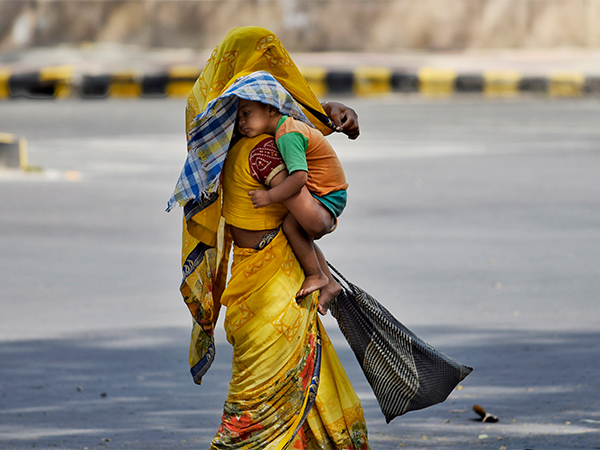Timeline: Escalating tensions between Russia and Ukraine
Feb 22, 2022

New Delhi [India], February 22 : Russian President Vladimir Putin's decision on Monday to recognize Ukraine's breakaway regions - Donetsk and Luhansk - as independent entities has escalated the ongoing tensions between the two countries.
Here is a timeline of the events.
Ukraine gained independence in 1991 after the disintegration of the Soviet Union. Russia has been trying to keep the country in its orbit of influence since then.
Minsk Agreements
In 2014, a separatist insurgency started in Ukraine's eastern industrial heartland Donetsk Basin. In February that year protesters in Ukraine overthrew President Viktor Yanukovych, who was friendly to Russia's interests. During the protests, more than 100 people were killed.
Following fighting and violence that broke out as Russia-backed separatists seized territory in eastern Ukraine, Minsk I agreement was reached that also involved Organisation for Security and Cooperation in Europe (OSCE). However, the agreement reached in September 2014 broke down. Minsk II agreement was then reached in February 2015 requiring the participants to adhere to various points including withdrawal of heavy weapons by both sides.
The interim government that followed the "pro-Western revolution" eventually signed a trade agreement with the European Union, which was seen as the first step towards membership of the bloc.
In March 2014, Russia invaded and then annexed the Ukrainian peninsula of Crimea. In April pro-Russian separatists in Donbas region declared independence. The war continued in the eastern Ukrainian region and then spread westwards. Roughly 13,000 Ukrainian soldiers and civilians eventually died in the conflict. The front lines have barely shifted for years.
Russia's tensions with the West deepen
In April 2019, Volodymyr Zelensky, a former comedian, was elected by a large majority as President of Ukraine on a promise to restore Donbas to the country.
The crisis deepened in January 2021, when Zelensky appealed the US President Biden to let Ukraine enter NATO. In the spring of 2021, Russia started massing troops near Ukraine's borders in what it said were training exercises.
Russia stated that its troop deployment is in response to NATO's steady eastward expansion. It argued that its moves are aimed at protecting its own security considerations.
Troop build-up
Russia, in autumn last year, mobilized around 1,00,000 troops on its border with Ukraine. It sought assurance from the US that Ukraine shall not be inducted in NATO. This escalated tensions between Russia and the West which have been supportive of Ukraine. The US has assured Ukraine that it will "respond decisively" in case of an invasion by Russia.
In December last year, Russia asked NATO to pull back its military deployments to the 1990s level and prohibit the deployment of intermediate-range missiles in the bordering areas.
But the US ruled out changing NATO's "open-door policy" which means NATO would continue to induct more members. The US also said that it would continue to offer training and weapons to Ukraine.
Germany also warned Russia that the Nord Stream 2 pipeline would be stopped if Russia were to invade Ukraine.
The US threatened Russia of new economic sanctions in case of attempts of invasion against Ukraine.
No narrowing of differences
US and Russian diplomats failed to narrow differences on Ukraine and in January this year a cyberattack warning Ukrainians to "be afraid and expect the worst" hit Ukrainian government websites.
Washington in late January this year presented a written response to Russia's security demands, repeating a commitment to NATO's "open-door" policy while offering "pragmatic" discussions of Moscow's concerns. The Russian President said that Moscow's main security demands have not been addressed.
Putin on Monday signed a decree recognizing the independence of breakaway regions Donetsk and Luhansk. He made this announcement during a televised address to Russians.
UN chief Antonio Guterres has said that Russia's decision to recognize the Donetsk and Luhansk regions of Ukraine as independent is a violation of the territorial integrity and sovereignty of Ukraine and inconsistent with the principles of the Charter of the United Nations.
US President Joe Biden on Monday signed an executive order that will prohibit all new investment, trade, and financing by US persons to, from, or in the "so-called Donetsk and Luhansk People's Republics."




















